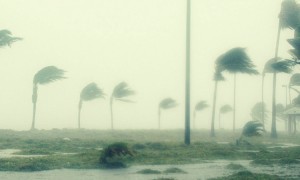Spring in North Texas can be absolutely brutal — strong pouring rains, enormous hail, frequent lightning, and even the occasional tornado. Your first concern, during the storm, is for yourself and your family. Now that the worst has passed, it’s time to assess your home for storm damage and make timely reports to your insurance company so that any issues can be repaired as soon as possible.
Start at the Top
The most likely portion of your DFW home to sustain storm damage is your roof. Hail can punch holes straight through; heavy winds can blow up loose shingles; and rain can wind its way through even the smallest of cracks and go on to cause enormous water issues. Unfortunately, your roof can also be the hardest part of your home to assess — from the ground, you may only be able to see large-scale damage. And getting on top of your roof, especially if you lack a tall ladder, can be both tricky and dangerous.
Leaks most often occur from the top of your home as well, sometimes near your chimney and others when portions of your wall or the seal around windows or doors are compromised. Check both your ceilings and floors carefully for any sign of water damage after storms roll through.
Flooded Backyards and Basements
It’s unusual for homes to have basements in North Texas, but some still do. Unfortunately, a basement can flood fairly easily when brutal storms rip through the area. Basement leaks can occur because of foundation issues, issues with windows or doors letting in water, or water pooling down from higher portions of the house where leaks may have begun. Either way, any time water pools in the lowest level of your home, it indicates an issue you’ll need to jump on right away.
Backyards can also flood during spring storms. Most times, this occurs due to inadequate drainage opportunities. You may be able to resolve your own backyard floods if you know that drains are already installed but may have become clogged during storms. If you can unclog those drains yourself, that’s great news. If not — or if you don’t have any drains installed at all — you may be facing an expensive repair. While your insurance may cover fixing broken drains, installing new drains is likely outside of your scope of coverage.
Don’t Fall Prey to Unethical Companies
Unfortunately, not all home repair companies are ethical — some will want to charge excessive fees just to take a cursory look. And some of these not-so-nice contractors go door-to-door after storms, looking to scare homeowners into hiring them on the spot with tales of enormous damage and worse repercussions. Don’t fall prey when you believe your home needs repairs. Instead, use companies your friends or neighbors can personally recommend or who have good feedback on trusted websites. You may also want to get multiple quotes for the same work.
Filing Insurance Claims
At the same time as you’re collecting estimates for your damage, open a claim with your home insurance company. They will send out an adjuster, who can inspect your home and review repair estimates you’ve already received. Once the inspector’s report is finalized, your insurance company will determine the amount of money your claim is worth. You may need to negotiate this amount, particularly if it is far lower than the estimates you’ve received. Don’t be afraid to ask for more or push heavily for additional estimates to be reviewed so your damages are compensated fairly and your only out-of-pocket expenses are your deductible.
[cf]skyword_tracking_tag[/cf]






